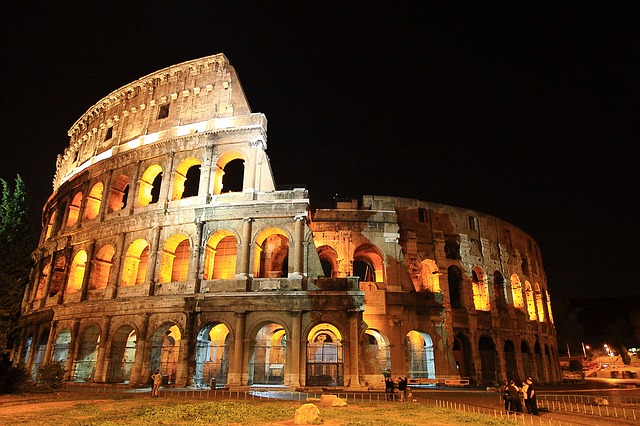
The Colosseum is located in Rome, the capital of Italy.
The Royal Spanish Academy ( RAE ), in its dictionary, recognizes two meanings of the term coliseum . The concept can refer to a space that is built to host public shows or to the covered establishment where sporting events take place .
It is interesting to mention that the etymological root of coliseum is found in the Italian word Colosseo . This is the name given to a famous amphitheater from the time of the Roman Empire , whose very well-preserved remains still exist.
The history of the Colosseum
At first, the Colosseum was known as the Flavian Amphitheater (or, in Latin, Amphitheater Flavium ). This is because it was erected during the Flavian dynasty , being inaugurated in the year 80 .
Next to this infrastructure, a statue was installed in honor of Emperor Nero : the Colossus of Nero , made of bronze and located on top of a pedestal that was covered in marble. The monument , which no longer exists, was about thirty meters high. Due to the proximity of this statue, around the 8th century the amphitheater began to be known as the Colosseum .
During the Roman Empire , different shows took place in the Colosseum , such as gladiator fights and the representation of naval battles. Mythological fights were also staged, confrontations between men and wild animals were organized and executions of criminals were exhibited.
It is estimated that about 50,000 people could gather in the Colosseum . The spectators were located according to social class, with the emperor and the senators being those who were located in the area closest to the arena .

Clashes between gladiators and wild animals were common in the Colosseum
A tourist attraction
The Colosseum was used to present shows for half a millennium. With changes in customs, its use mutated; In addition, a fire , several earthquakes and the action of stone cutters threatened its integrity.
Today, the Colosseum is the main tourist attraction in the city of Rome . It is part of the World Heritage Site protected by UNESCO and has been chosen as one of the New Seven Wonders of the Modern World .
The coliseum as an amphitheater, gymnasium or stadium
As a common noun, coliseum can refer to an amphitheater : a semicircular or oval space with staggered rows like bleachers. The term can also name a gymnasium or stadium intended to host sporting and artistic events.
We can talk, in this framework, about the José Miguel Agrelot Puerto Rico Coliseum which is located in San Juan . Opened in 2004 , it has capacity for 18,500 spectators and was the scene of shows by artists such as Beyoncé , Aerosmith , Sting , The Rolling Stones , Elton John , Paul McCartney , Lady Gaga , Metallica and Madonna .
The Amauta Coliseum is located in Lima , the capital of Peru . Ricky Martin , Soda Stereo and Enrique Iglesias , for example , performed at this venue.
It is interesting to mention, finally, that Buenos Aires has a theater called Coliseo . Located in the Retiro neighborhood, it is characterized by its orchestra pit and for having hosted, in 1920 , the first radio broadcast in Argentina , which was carried out from its terrace (that is why those who carried out said broadcast are mentioned as "Los locos de la roof» ).
